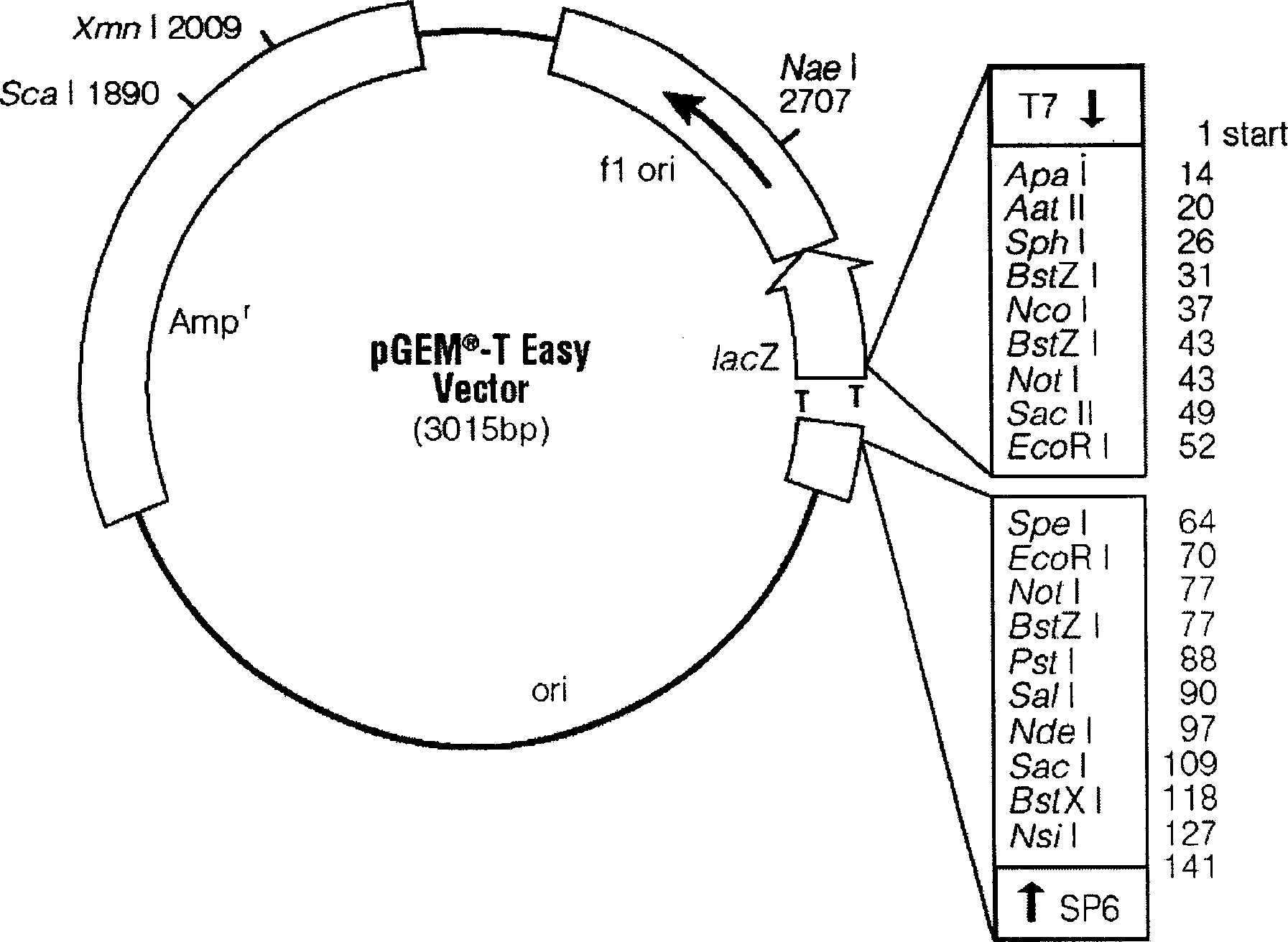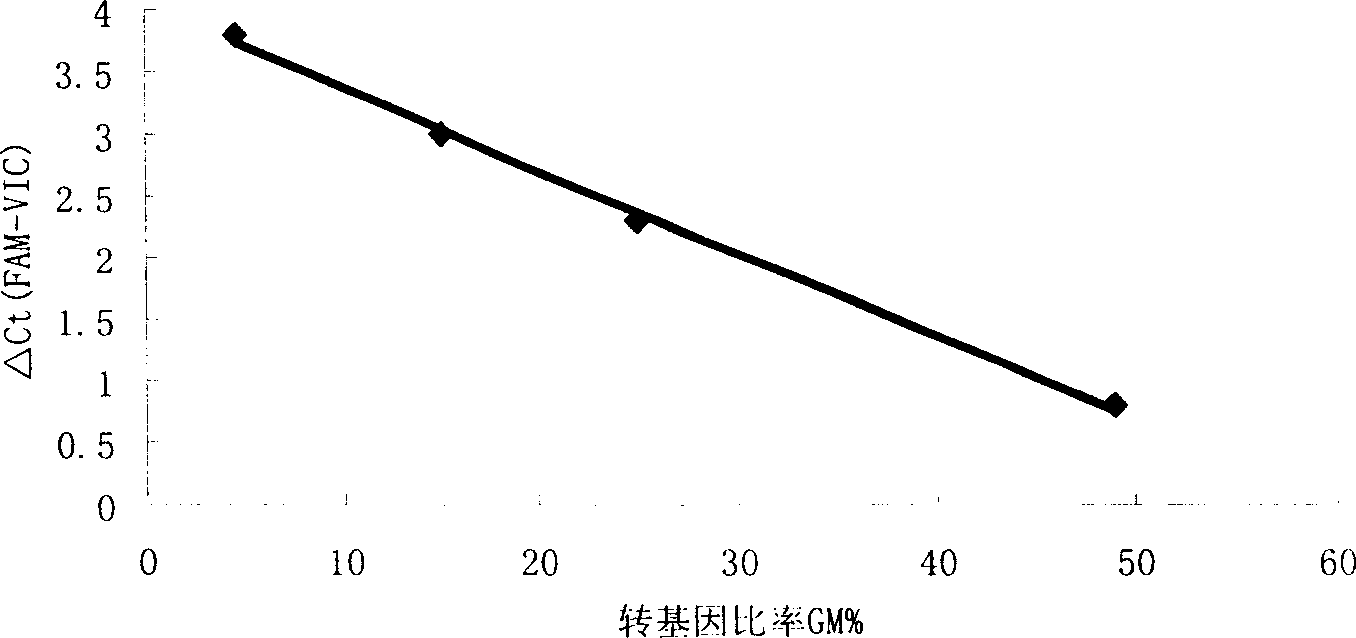Quantitative detection method for transgenic farm product and food mixture
A quantitative detection and genetically modified technology, which is applied in the determination/inspection of microorganisms, biochemical equipment and methods, fermentation, etc., can solve the problems of inability to perform quantitative analysis and quantitative analysis, and achieve the guarantee of inalterability and correctness , The effect of detecting accurate data
- Summary
- Abstract
- Description
- Claims
- Application Information
AI Technical Summary
Problems solved by technology
Method used
Image
Examples
Embodiment 1
[0039] Embodiment 1: the detected food is corn purchased from the market (assumed to contain the herbicide-resistant BAR gene), and the specific operation method is as follows:
[0040] The first step, the extraction of the maize genome
[0041] Firstly, the corn is ground into powder by grinding method, and then the corn genome DNA is extracted with the method of TAKARA Company Corn Genome Extraction Kit. The specific operation steps are described in detail in the kit manual.
[0042] Step 2: Design primers and probes for detection of marker genes and housekeeping genes
[0043] Obtain herbicide resistance BAR gene sequence number X17220 and maize housekeeping gene invertase gene sequence number U16123 from ncbi genbank, and design primers and MGB probe markers on the quantitative detection marker gene herbicide resistance BAR gene and maize housekeeping gene invertase gene As follows:
[0044] Design primers and probes for the herbicide-resistant BAR gene, the amplified pr...
Embodiment 2
[0090] Embodiment 2: The food detected is the soybean purchased from the market, and the specific operation method is as follows:
[0091] The first step, soybean genome extraction
[0092] Firstly, the soybean is ground into powder by grinding method, and then the soybean genome DNA is extracted by using the soybean genome extraction kit method of TAKARA Company. The specific operation steps are described in detail in the instruction manual of the kit.
[0093] Step 2: Design primers and probes for detection of marker genes and housekeeping genes
[0094] The CAMV35S gene sequence number and the soybean housekeeping gene LECTIN gene sequence number K00821 were obtained from ncbi genbank, and primers and MGB probe markers were designed on the quantitative detection marker gene CAMV35S gene and soybean housekeeping gene LECTIN gene as follows:
[0095] Design CAMV35S gene primers and probes, the product amplified by the following primers ranges from 2343bp to 2404bp in AJ25101...
PUM
 Login to View More
Login to View More Abstract
Description
Claims
Application Information
 Login to View More
Login to View More - R&D
- Intellectual Property
- Life Sciences
- Materials
- Tech Scout
- Unparalleled Data Quality
- Higher Quality Content
- 60% Fewer Hallucinations
Browse by: Latest US Patents, China's latest patents, Technical Efficacy Thesaurus, Application Domain, Technology Topic, Popular Technical Reports.
© 2025 PatSnap. All rights reserved.Legal|Privacy policy|Modern Slavery Act Transparency Statement|Sitemap|About US| Contact US: help@patsnap.com


